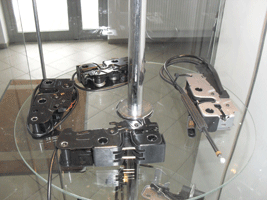Computer numerical control (CNC) machining is one of the many skilled trades experiencing a lack of qualified employees. However, some people believe teaching CNC machining in schools is a practical way to start closing the labor force gap.
Pockets of Extreme Labor Force Need
If you look at the United States Bureau of Labor Statistics (BLS) job outlook for CNC machinists and tool and die makers, the labor force issue may not seem immediately apparent. The BLS estimates there will be about 44,100 job openings for these professionals each year from 2021 to 2031.
The analysis also clarifies that most of those employment opportunities will result from retiring from the workforce. It mentions that machinists will see limited job growth due to technological advancements. However, the national outlook does not show the whole picture, largely because certain areas of the country have a tremendous and immediate need for more people to enter the labor force.
Consider the Akron CNC Training Center in Tallmadge, Ohio. Laurie Norval, the center’s founder and director, estimates there are about 1,100 machine shops within an hour’s drive of the educational facility. The center itself is in one of them. Norval said her school’s four-month training program is specifically designed to meet the strong local labor demand for machinists.
Norval also explained how more CNC machine shops want them to train their workers. They say they can’t find enough, so Norval suggests the companies train entry-level employees who have a good work ethic rather than expecting to find people who already have the skills they need.
Teaching CNC Machining From a Young Age
CNC machining produces high-performance precision parts in a variety of industries including agriculture, construction, electronics, medical devices and more. The high precision allows machinists to keep up with the strict quality standards in these industries. Many CNC training schools appeal to adults who are either looking for a new career or want an alternative to college. However, there’s an emerging trend of teaching CNC machining to younger people. They could realize it appeals to them earlier, paving the way for them to enter the labor force as soon as possible.
In Wisconsin’s Lincoln Academy, students in grades six through eight take four courses per academic year that help them explore career possibilities. There were 15 students enrolled in a CNC course during one recent quarter. They start programming trainer machines within a few weeks of the start date.
Kristi Cole, the school’s CEO, said it’s vital that career and technical education (CTE) starts well before kids get to high school. She also discussed how young people are often held back by adults who don’t understand what they’re capable of achieving. Besides being able to learn CNC machining without difficulty, many students love it and find they’re on their way to a rewarding career path.
Ohio’s Kent Roosevelt High’s Manufacturing Technology Program takes juniors and seniors from six school districts. Teaching CNC machining doesn’t happen right away, though. Students learn manual machining first, due to feedback from the program’s industry partners that many still use manual processes in some capacity.
CNC Education Can Help Introduce People to STEM Careers
Deciding to teach CNC machining to students in schools could be an excellent way to get them interested in science, technology, engineering and math (STEM) careers. Women are as capable as men in those fields but still only make up relatively small percentages of workers.
That could change over time, especially with more females deciding to become CNC machinists. They recognize the appealing job prospects in the industry and like the option to have steady, well-paying work.
Elena Rodriguez is a CNC machine operator and setup specialist who began her manufacturing career in 2006. She faced daunting challenges, including that English is not her first language, and she worked on a male-dominated shop floor. However, she credits her parents as setting a strong foundation for her career.
Her father taught her to read builders’ blueprints and supported her love of making things. Her mother encouraged her to have a strong work ethic and learn to love using her hands. Indeed, such inspiration for future careers often starts at home. However, it’s easy to see how teaching CNC machining in schools could keep that early momentum going until it’s time for people to start thinking about entering the workforce.
It’s even easier for that to happen if education providers remove financial barriers that could make people hesitate to become CNC machinists. Industry representatives in Northwest Ohio say there’s an urgent need for more people to learn the skill. The Workforce Development and Innovation (WDI) team at Rhodes State College responded by offering a complimentary introductory CNC machining course to the area’s residents. It included 42 hours of classroom and lab instruction and 33 hours of online content.
Teaching CNC Machining Early Fills a Necessary Need
The circumstances surrounding the CNC machinist labor shortage won’t improve without actionable strategies designed to combat them. These efforts to teach the skill to young people should help the labor market while ensuring learners have what they need to succeed in rewarding careers.























